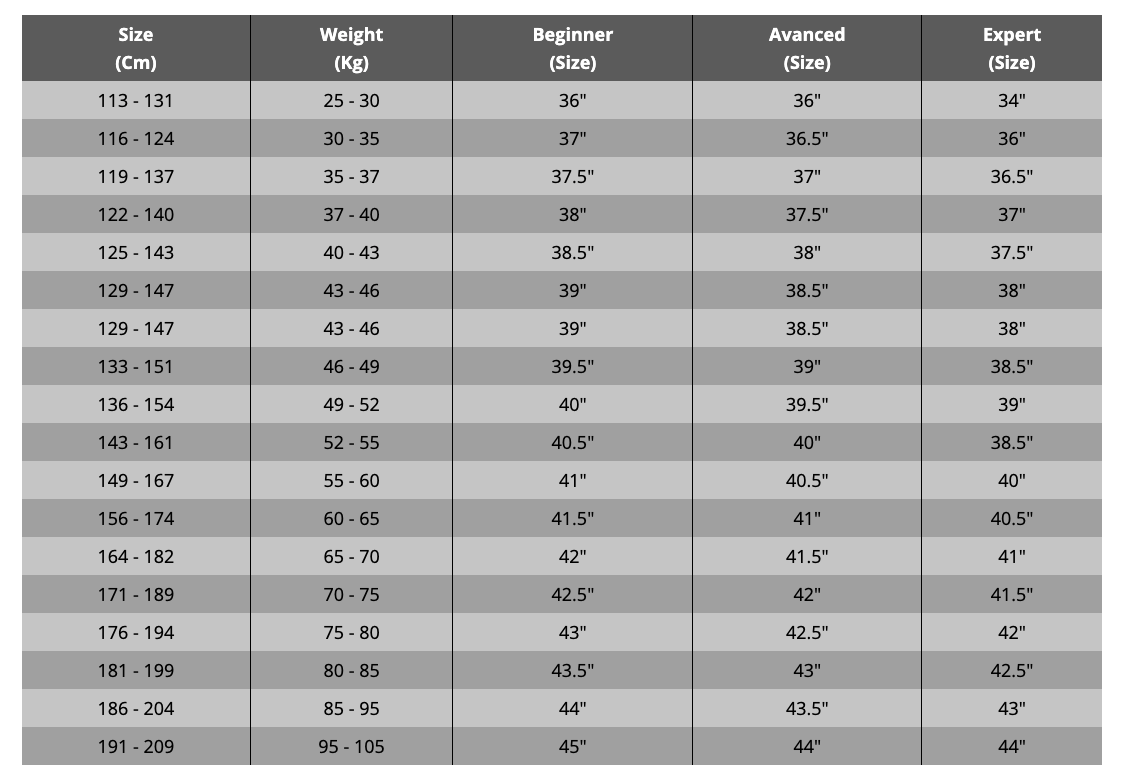In this second episode of our tutorial series, our champion Pierre-Louis Costes (2x world bodyboard champion) took the time to explain in the video above all the basics in order to choose the appropriate board for your needs.
1) Choose the size of your board
The first thing is to figure out the size of the board you need. Nowadays, bodyboard sizes are in inches and run from 32 to 46 inches. The size you choose is related to your weight, height and your ability.
To choose your appropriate board size, you can refer to the chart below.

2) The core of your board
Choosing the right core is an important element. There are nowadays three principal cores : PP, PE & NRG.
The Polyethylene PE
The PE is a super flex, maneuverable and affordable mid-range core that is mostly suited to beginner & intermediate bodyboarders. More advanced bodyboarders will however like the flex this core can offer in big and heavy cold-water waves.
Even though the polyethylene has better lifespan than EPS cores, its lifespan compared to PP and NRG+ is inferior.
The polypropylene PP
The F1 of all cores! The polypropylene is the core used by most professional bodyboarders worldwide. Indeed, this hydrophobic and super stiff core will make your board go faster. Its lack of flex will however lead to a hardly maneuverable board for a beginner.
PP is the essential core for all advanced bodyboarders riding in warm waters.
The NRG+
The NRG+ is an entirely hydrophobic hybrid core composed of two layers of polypropylene: One high density layer (1.9 PCF) combined with a low density one (1.4 PCF).
This combination will give you a good middle ground between PP & PE. Indeed, your board will be more flexible than a PP but stiffer than a PE board, giving you a fast high-end board that you will actually be able to control if you are still an intermediate bodyboarder.
NRG+ is ideal for all water temperatures but for more advanced bodyboarders we would only recommend it in cold waters.
3) The tail of your board
Bodyboards mainly have two types of tails: Crescent Tail & Bat Tail
The crescent tail is the most common one. It allows for more maneuverability around the hips and legs and a better control in hollow waves. It is also the most appropriate tail for riding drop knee.
The bat tail, because its shape looks like a bat, is a tail that makes spins and landing moves easier but will however give you less control in hollow waves.
4) Stiffener: Stringers & mesh
Stringers and mesh are two elements that will make your bodyboard stiffer and more durable.
Stringers are placed inside the core and can go from single to triple. On high-end boards, stringers are made of carbon while more affordable boards will usually have a fiberglass stringer.
The mesh is a layer placed between the core and the slick that makes your board stiffer and with a better lifespan. You can easily recognize if a board has mesh when the slick has a honeycomb aspect.
5) Options & innovations
In recent years, bodyboards have evolve towards being more & more high performance thanks to a few innovations. Among these innovations PLC uses the radial flex & single to double concave.
The Radial Flex mainly helps stiffen the board while keeping some necessary flex under the elbows. Also, it allows for greater projection, an increased lifespan and a better distribution of impact stresses, such as those caused by heavy landings.
Single to Double Concave (often referred as SDC) will make your board faster and when combined with Radial Flex, will allows for a better performance in small waves.

